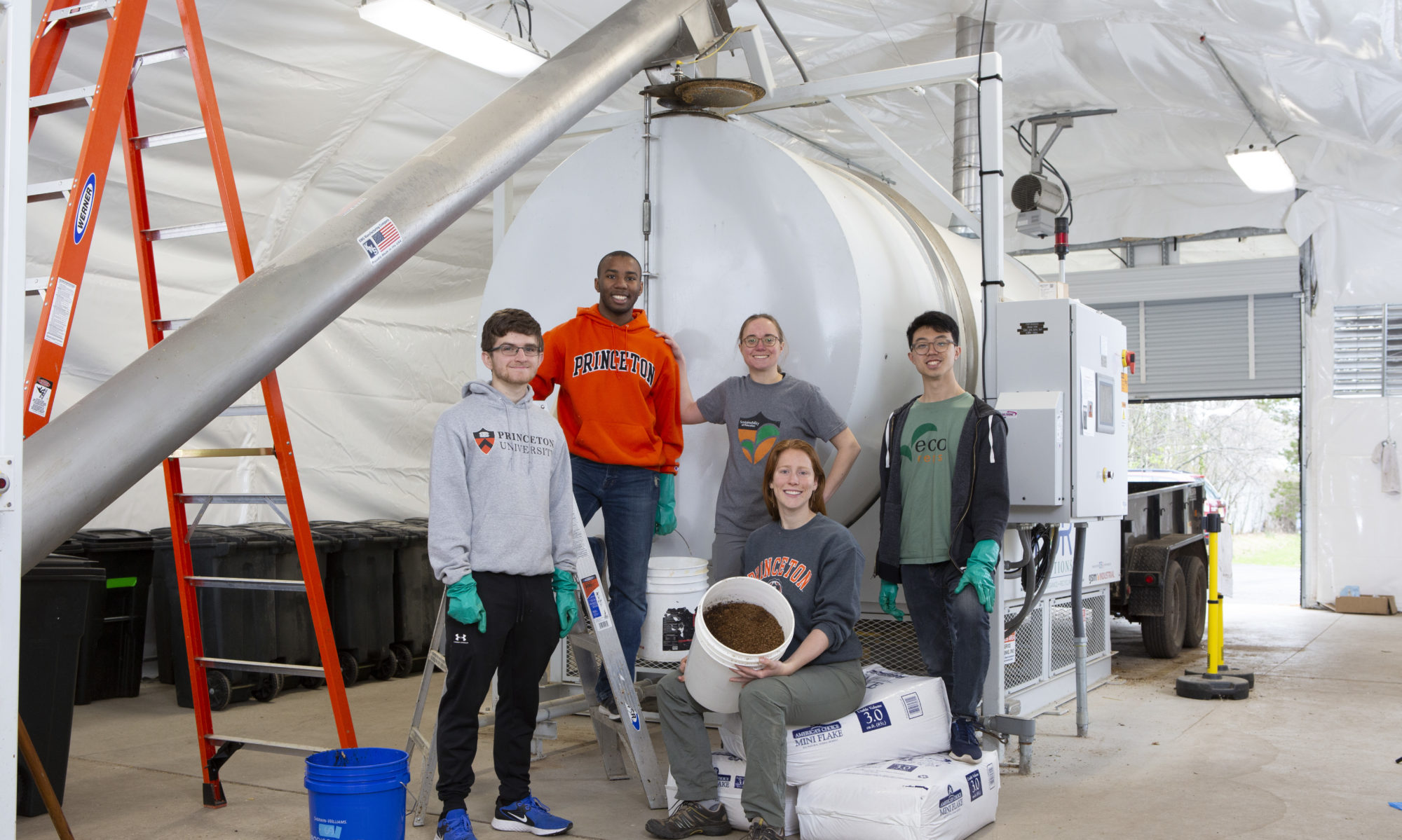Welcome back! This week’s bioDIGESTer includes the summary of last week’s data, a photo essay highlighting the compost off-loading process, and the biodigester’s interactive exhibit at the Frist GreenSpace.
Weekly Data: 10/22 – 10/26
Last week’s data were very similar to the week prior having loaded 3,703 lbs of food scraps and 1,100 lbs of wood shavings into the system.
| Food | Wood shavings (BA/CS) | % BA/CS |
Compost Off-loaded | |
| Week Totals (lbs.) | 3,703 | 1,100 | 30% | 3,000 |
| CUMULATIVE (lbs) | 14,278 | 4,109 | 29% | 5,000 |
We also off-loaded a trailer bed’s worth of finished compost or around 3,000 lbs. This amount is roughly equal to the amount of food that we added in order to balance out the input-output equation to prevent over-filling the system (Note: About 25%-30% of the mass of the cumulative feedstock is lost to water vapor which cancels out the addition of the wood shavings).

Herman Ishengoma ’22 assists with off-loading finished compost into the receiving receptacle. Visible is water evaporating from the finished compost as it transitions from a 100+ degrees F environment to ambient temperature on a chilly Fall morning.

Dr. Nick holds a small amount of our best batch of finished compost to date


After two off-loads, the trailer bed is full and is hooked up to a truck and taken by our Grounds crew.

A small amount of compost is salvaged for nutrient analysis testing using a UNIBEST resin capsule which will give us an initial read on the total plant-available nutrients in the compost. Stay tuned for results!
Biodigester at the Frist GreenSpace
The biodigester project is this semester’s featured exhibit at the Office of Sustainability’s GreenSpace in Frist Campus Center. Stop by the interactive kiosk on the 100-level to learn more about the step-by-step operational process, the University’s progress and approach toward recycling uneaten food on campus, and class projects and additional research opportunities available via the Campus as Lab program.


















